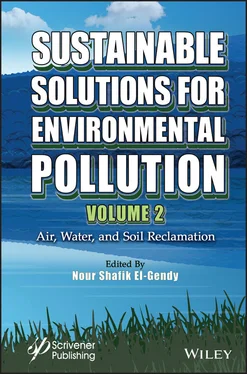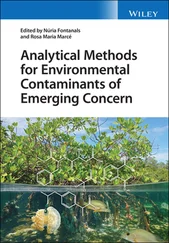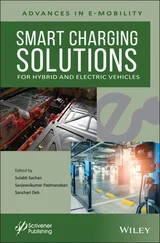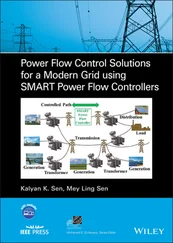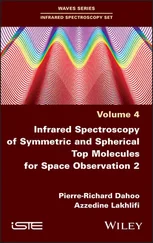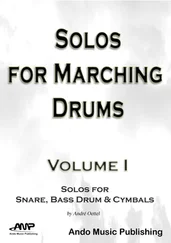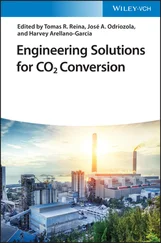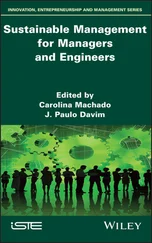Vymazal, J., Plants used in constructed wetlands with horizontal subsurface flow: a review. Hydrobiologia , 674, 1, 133–156, 2011, doi: 10.1007/ s10750-011-0738-9.
Vymazal, J., Removal of nutrients in constructed wetlands for wastewater treatment through plant harvesting – Biomass and load matter the most. Ecol. Eng. , 155, 105962, 2020, doi: 10.1016/j.ecoleng.2020.105962.
Walaszek, M., Bois, P., Laurent, J., Lenormand, E., Wanko, A., Micropollutants removal and storage efficiencies in urban stormwater constructed wetland. Sci. Total Environ. , 645, 854–864, 2018, doi: 10.1016/j.scitotenv.2018.07.156.
Wang, H.M., Ren, Z.Y.J., A comprehensive review of microbial electrochemical systems as a platform technology. Biotechnol. Adv. , 31, 8, 1796–1807, 2013, doi: 10.1016/j.biotechadv.2013.10.001.
Wang, L., Yue, X., Wang, H., Ling, K., Liu, Y., Wang, J., Hong, J., Pen, W., Song, H., Dynamic inversion of inland aquaculture water quality based on UAVs-WSN spectral analysis. Remote Sens. , 12, 3, 402, 2020a, doi: 10.3390/rs12030402.
Wang, L.W., Hou, D.Y., Cao, Y.N., Ok, Y.S., Tack, F.M.G., Rinklebe, J., O’Connor, D., Remediation of mercury contaminated soil, water, and air: A review of emerging materials and innovative technologies. Environ. Int. , 134, 19, 2020b, doi: 10.1016/j.envint.2019.105281.
Weiss, P.T., Gulliver, J.S., Erickson, A.J., Cost and pollutant removal of storm-water treatment practices. J. Water Resour. Plan. Manage. , 133, 3, 218–229, 2007, doi: 10.1061/(ASCE)0733-9496(2007)133:3(218).
Wenzel, W.W., Rhizosphere processes and management in plant-assisted bioremediation (phytoremediation) of soils. Plant Soil , 321, 1, 385–408, 2009, doi: 10.1007/s11104-008-9686-1.
Weragoda, S.K., Jinadasa, K.B.S.N., Zhang, D.Q., Gersberg, R.M., Tan, S.K., Tanaka, N., Jern, N.W., Tropical application of floating treatment wetlands. Wetlands , 32, 5, 955–961, 2012, doi: 10.1007/s13157-012-0333-5.
West, M., Fenner, N., Gough, R., Freeman, C., Evaluation of algal bloom mitigation and nutrient removal in floating constructed wetlands with different macrophyte species. Ecol. Engin. , 108, 581–588, 2017, doi: 10.1016/j. ecoleng.2017.07.033.
Westman, W.E., How much are nature’s services worth? Science , 197, 4307, 960– 964, 1977, doi: 10.1126/science.197.4307.960.
WFD, Directive 2000/60/EC of the European Parliament and of the Council of 23 October 2000 establishing a framework for Community action in the field of water policy, OJ L 327, 22.12.2000, p. 1–73, Brussels, Belgium, 2000, http://data.europa.eu/eli/dir/2000/60/oj.
Wiest, L., Baudot, R., Lafay, F., Bonjour, E., Becouze-Lareure, C., Aubin, J.-B., Jame, P., Barraud, S., Kouyi, G.L., Sébastian, C., Vulliet, E., Priority substances in accumulated sediments in a stormwater detention basin from an industrial area. Environ. Pollut. , 243, 1669–1678, 2018, doi: 10.1016/j. envpol.2018.09.138.
Wilcock, R.J., Sorrell, B.K., Emissions of greenhouse gases CH 4and N 2O from low-gradient streams in agriculturally developed catchments. Water Air Soil Pollut. , 188, 1–4, 155–170, 2008, doi: 10.1007/s11270-007-9532-8.
Wong, T.H.F., Geiger, W.F., Adaptation of wastewater surface flow wetland formulae for application in constructed stormwater wetlands. Ecol. Eng. , 9, 3, 187–202, 1997, doi: 10.1016/S0925-8574(97)10011-8.
Wu, S.B., Kuschk, P., Wiessner, A., Muller, J., Saad, R.A.B., Dong, R.J., Sulphur transformations in constructed wetlands for wastewater treatment: A review. Ecol. Eng. , 52, 278–289, 2013, doi: 10.1016/j.ecoleng.2012.11.003.
Wu, S.J., Li, H., Zhou, X.C., Liang, P., Zhang, X.Y., Jiang, Y., Huang, X., A novel pilot-scale stacked microbial fuel cell for efficient electricity generation and wastewater treatment. Water Res. , 98, 396–403, 2016, doi: 10.1016/j. watres.2016.04.043.
Xiong, J.Q., Kurade, M.B., Jeon, B.H., Can microalgae remove pharmaceutical contaminants from water? Trends Biotechnol. , 36, 1, 30–44, 2018, doi: 10.1016/j. tibtech.2017.09.003.
Yadav, A.K., Dash, P., Mohanty, A., Abbassi, R., Mishra, B.K., Performance assessment of innovative constructed wetland-microbial fuel cell for electricity production and dye removal. Ecol. Eng. , 47, 126–131, 2012, doi: 10.1016/j. ecoleng.2012.06.029.
Yan, Z.S., He, Y.H., Cai, H.Y., Van Nostrand, J.D., He, Z.L., Zhou, J.Z., Krumholz, L.R., Jiang, H.L., Interconnection of key microbial functional genes for enhanced benzo-a-pyrene biodegradation in sediments by microbial electrochemistry. Environ. Sci. Technol., 51, 15, 8519–8529, 2017, doi: 10.1021/ acs.est./b00209.
Yang, Y., Lu, Z., Lin, X., Xia, C., Sun, G., Lian, Y., Xu, M., Enhancing the bioremediation by harvesting electricity from the heavily contaminated sediments. Bioresour. Technol. , 179, 615–618, 2015, doi: 10.1016/j.biortech.2014.12.034.
Yang, Y., Yi, Y., Wang, W., Zhou, Y., Yang, Z., Generalized additive models for biomass simulation of submerged macrophytes in a shallow lake. Sci. Total Environ. , 711, 135108, 2020, doi: 10.1016/j.scitotenv.2019.135108.
Yu, B., Tian, J., Feng, L., Remediation of PAH polluted soils using a soil microbial fuel cell: Influence of electrode interval and role of microbial community. J. Hazard. Mater. , 336, 110–118, 2017, doi: 10.1016/j.jhazmat.2017.04.066.
Yu, H., Feng, C.H., Liu, X.P., Yi, X.Y., Ren, Y., Wei, C.H., Enhanced anaerobic dechlorination of polychlorinated biphenyl in sediments by bioanode stimulation. Environ. Pollut. , 211, 81–89, 2016, doi: 10.1016/j.envpol.2015.12.039.
Yuan, C., Huang, T., Zhao, X., Zhao, Y., Numerical models of subsurface flow constructed wetlands: review and future development. Sustainability , 12, 8, 3498, 2020, doi: 10.3390/su12083498.
Zalewski, M., Janauer, G., Jolankai, G., Ecohydrology, A new paradigm for the sustainable use of aquatic resources, in: Guidelines for the implementation of the IHP-V Project 2.3/2.4 , p. 56, UNESCO, Paris (France, 1997).
Zhang, C.X., Wen, L., Wang, Y.Y., Liu, C.Q., Zhou, Y., Lei, G.C., Can constructed wetlands be wildlife refuges? A review of their potential biodiversity conservation value. Sustainability , 12, 4, 18, 2020a, doi: 10.3390/su12041442.
Zhang, D.Q., Gersberg, R.M., Ng, W.J., Tan, S.K., Removal of pharmaceuticals and personal care products in aquatic plant-based systems: A review. Environ. Pollut. , 184, 620–639, 2014a, doi: 10.1016/j.envpol.2013.09.009.
Zhang, F., Tian, L., He, Z., Powering a wireless temperature sensor using sediment microbial fuel cells with vertical arrangement of electrodes. J. Power Sources , 196, 22, 9568–9573, 2011, doi: 10.1016/j.jpowsour.2011.07.037.
Zhang, K, Chui, T.F.M., Linking hydrological and bioecological benefits of green infrastructures across spatial scales – A literature review. Sci. Total Environ. , 646, 1219–1231, 2019, doi: 10.1016/j.scitotenv.2018.07.355.
Zhang, K., Chen, Y.P., Zhang, T.T., Zhao, Y., Shen, Y., Huang, L., Gao, X., Guo, J.S., The logistic growth of duckweed ( Lemna minor ) and kinetics of ammonium uptake. Environ. Technol. , 35, 5–8, 562–567, 2014b, doi: 10.1080/09593330.2013.837937.
Zhang, T., Gannon, S.M., Nevin, K.P., Franks, A.E., Lovley, D.R., Stimulating the anaerobic degradation of aromatic hydrocarbons in contaminated sediments by providing an electrode as the electron acceptor. Environ. Microbiol. , 12, 4, 1011–1020, 2010, doi: 10.1111/j.1462-2920.2009.02145.x.
Zhang, T.T., Lu, Q.Q., Su, C.L., Yang, Y.R., Hu, D., Xu, Q.S., Mercury induced oxidative stress, DNA damage, and activation of antioxidative system and Hsp70 induction in duckweed ( Lemna minor ). Ecotox. Environ. Safe. , 143, 46–56, 2017, doi: 10.1016/j.ecoenv.2017.04.058.
Читать дальше
